Show Notes: Everything You Missed at Bluezone
- Oops!Something went wrong.Please try again later.
- Oops!Something went wrong.Please try again later.

From documentary filmmakers and collectors to designers and sustainability experts, the denim community gathered at Bluezone in Munich Jan. 23-24 to view Spring/Summer 2025 fabric collections and innovations. Innovative recycling processes and resource-efficient washing, dyeing and finishing technologies were key themes.
The event was also an opportunity for denim heads to share their latest projects and geek out over vintage and heritage designs.
More from Sourcing Journal
Bluezone introduced the Hall of Fame, a showcase of personal denim garments owned by industry leaders and the stories about them. The showcase included jeans and denim jackets owned by Jason Denham, Adriana Galijasevic, Adriano Goldschmied, Renzo Rosso, Ksenia Schneider, Tony, Tonnaer, Piero Turk and Dion Vijgeboom.
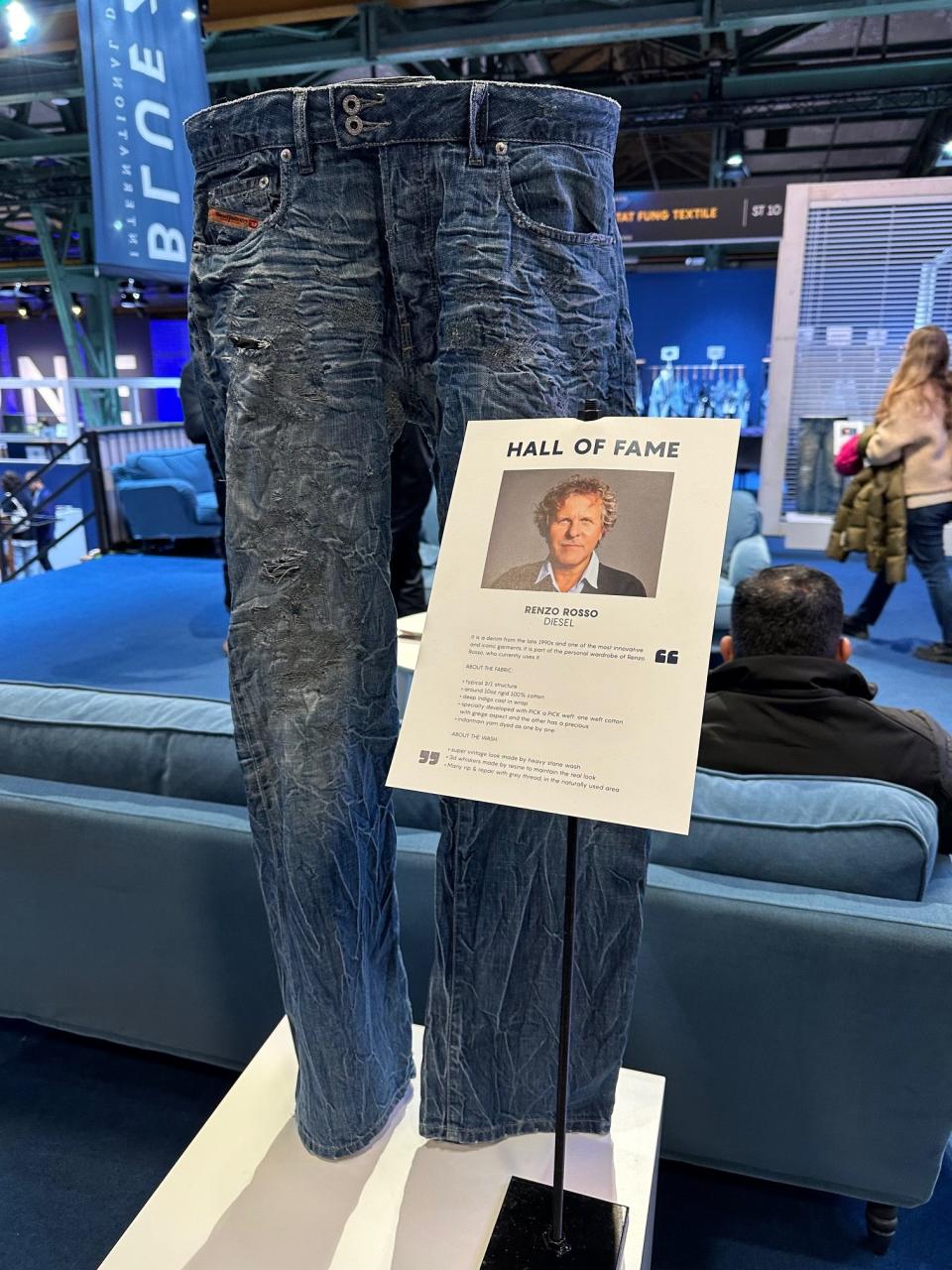
Denim’s evolution from being hard-wearing and functional workwear to a symbol of rebellious youth was the focus of an exhibit curated by Ruedi Karrer, founder of Jeansmuseum in Zurich. Karrer showcased men’s and women’s pieces from his collection, many decorated with handstitched mending, patchwork, paint, rock band patches, pins and unique buttons.
Some of the vintage gems seen in the new documentary “Denim Hunter” were on display as well. In the film, denim collector Viktor Fredbäck travels to mineshafts in the U.S. to search for rare jeans from the 1800s.
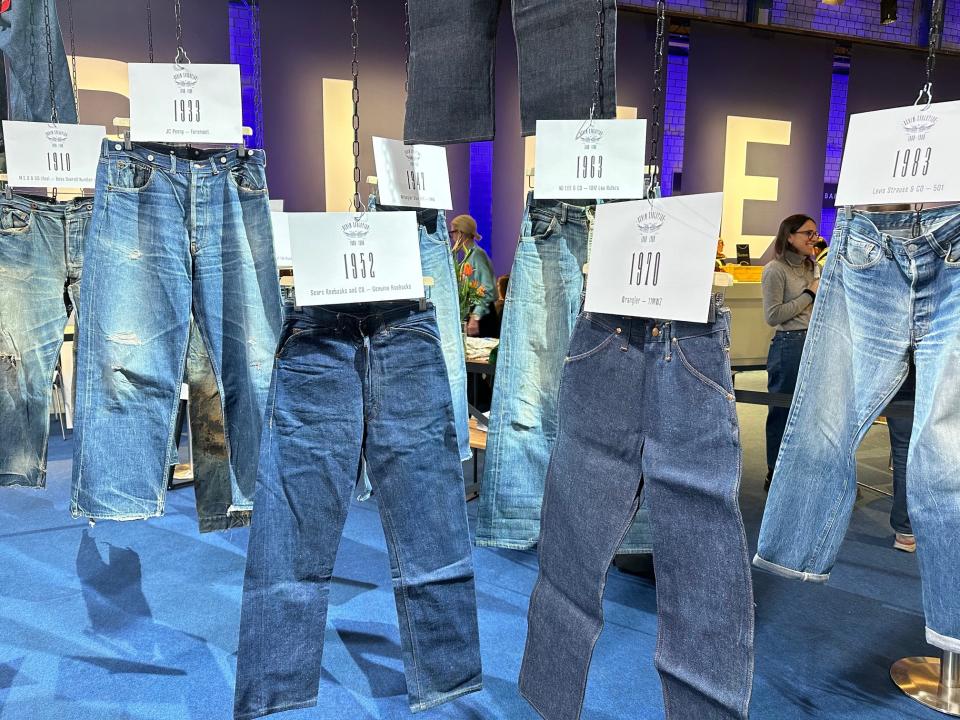
Turkish mill Orta teamed with Long John to present “The Biggest Sustainable Jeans,” a size 133×130 jean made with a cotton and recycled cotton fabric. The larger-than-life pant is a metaphor for how sustainability towers in importance.
There are many ways to interpret sustainability, however. When designers ask what the most sustainable fabric is, Neslihan Sebla Önder, Orta’s sustainability and marketing manager, said it is likely something that is already in your closet.
“What is the most sustainable jean is the one that you’re already wearing,” she said. “It is the one you’re always wearing. It might be something with acid wash, but if you’re wearing it for the past 30 years, that’s the most sustainable thing. So, the longevity [of a jean] is key here.”
Versatility is also an important quality. It is why Tat-Fung’s “On the Go” collection caught the attention of designers at Bluezone. Designed for “all occasions” the lightweight fabrics are available in 100 percent cotton constructions and low stretch constructions. The fabrics have a soft touch and quick-drying properties, which are especially good for garments designed for travel, a rep said.
The Chinese mill continues to see interest in collections with opposite aesthetics. Its popular Yolo collection offers fabrics with a smooth luster and special finishing that enhances softness. Its Re-Loom range offers vintage-inspired fabrics and a strong focus on crosshatch.
Chittagong Denim showcased its strength in linen fabrics. The Bangladeshi mill presented pure linen denim as well as fabrics blended with Tencel, hemp and Lycra T400. Along with being durable, the linen fabrics offer brands a quiet luxury vibe to denim trousers, shirting and suiting.
Each fabric in Swift Denim’s collection contains a minimum of 20 percent recycled cotton. The Tunisia-based weaver focused on snow bleaching and pastel hues for spring. Other fabrics obtained their distinct color from recycled indigo and ecru denim fabrics.
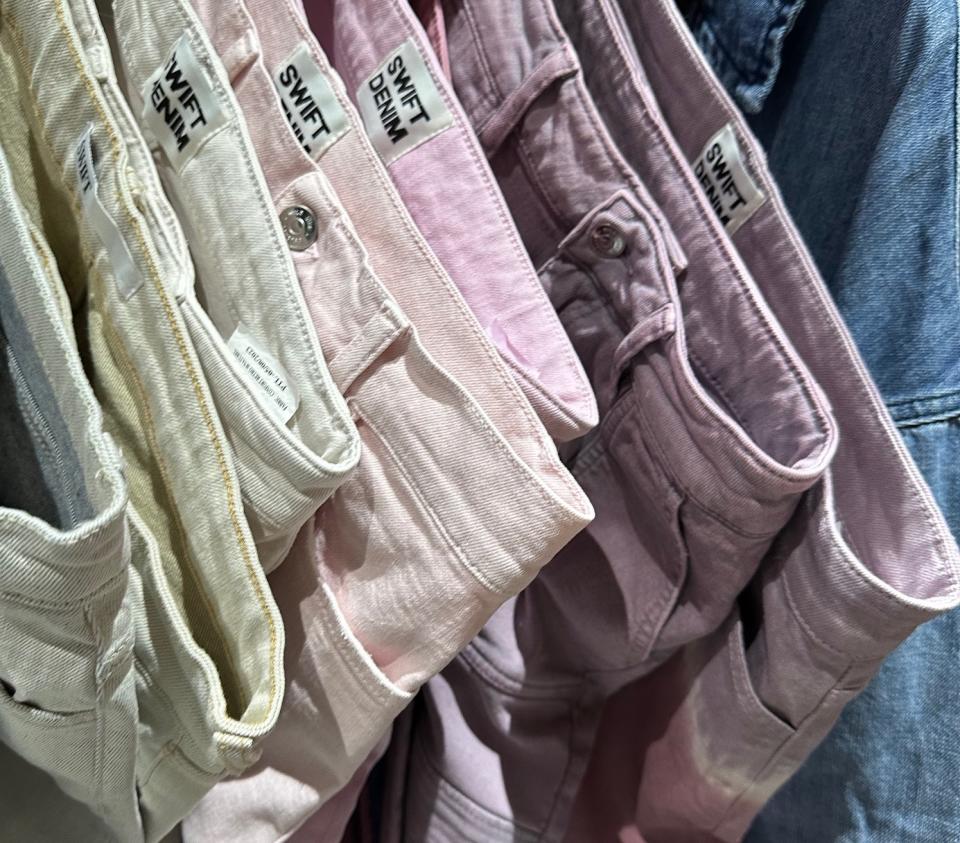
Good ideas are worth further exploration. That’s the thought process behind DryColors, Tejidos Royo’s piece dyeing technique modeled after the foam dyeing process it innovated in 2018. With DryColors, the mill replaces water as the medium by which color is transferred onto fabric with air. Compared to traditional dyeing methods, the waterless process requires 97 percent less water in dyeing, 69 percent less energy and zero water discharge.
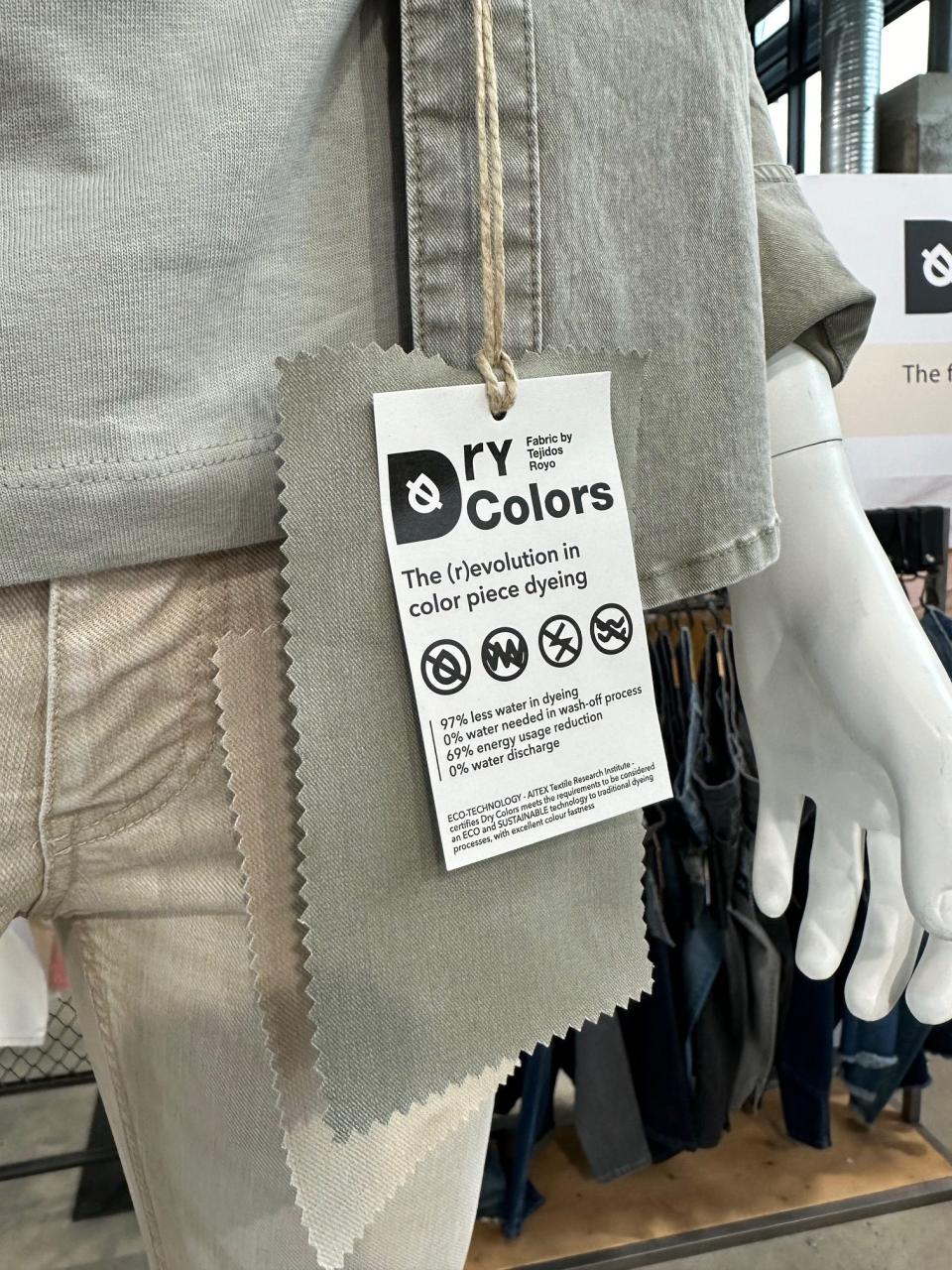
The result is a “real denim effect” that has good fastness and responds well to brushing and laser finishing. DryColors comes in an infinite color palette, from light to dark, and brands can develop custom colors. Another benefit is Tejidos Royo accepts low minimums for DryColors fabrics—a minimum of 1,000 yards—which allows brands to experiment with color and their consumer, and to introduce limited edition products.
Dusty blue, olive green and ecru were part of Artistic Fabric Mills’ Haru collection inspired by Japanese shades and constructions. The Pakistani mill presented a robust range of authentic fabrics. With Quadruflex, the mill focused on 4-way stretch fabrics with a vintage look. Lighter weight constructions with an orange peel effect, and rigid and comfort stretch fabrics with marbling were also presented.
The mill also upcycled sample garments into one-of-a-kind tote bags. Each bag was painted with a unique design by one of the mill’s designers.
Eyelet hems, tie-dye layered over prints, flocking and purple tints were among the highlights by the vertical factory and laundry Strom. Heavy fabrics with fancy weaves provided structure to boxy jackets and trousers; some had a hint of s shimmer. Other subtle details from the Turkish company included contrasting fabrics as pipping on the edges of slit pockets and multi-layered coin pockets.
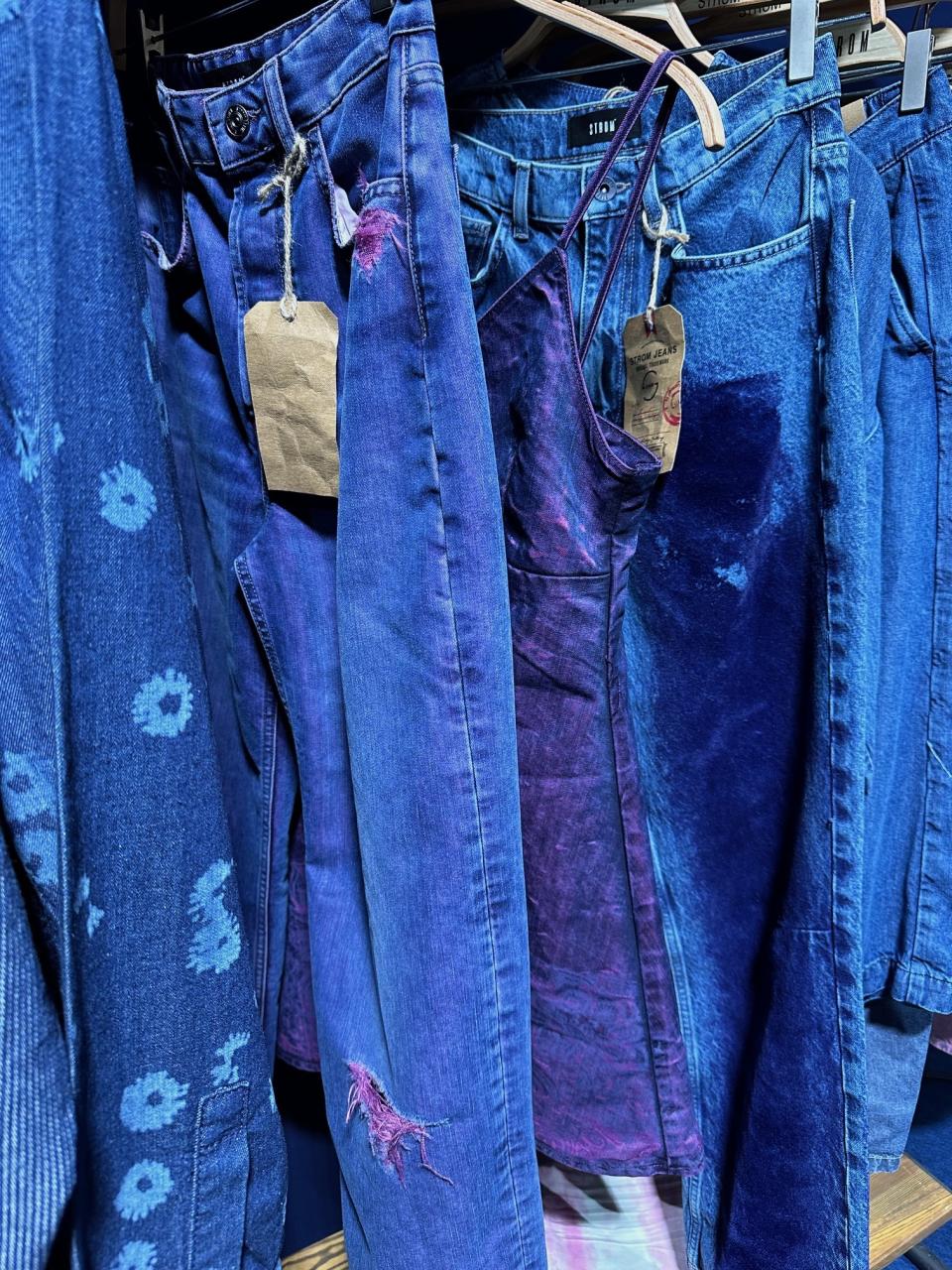
Y2K continues to be a source of inspiration for Le Faxx Jeans. The Turkish manufacturer showcased jeans decorated with crystals, printed foils, glitter and shimmery pastels. Le Faxx also created 3D texture to some styles by layering laser effects.
Lightweight fabrics in rigid and stretch constructions, double-faced and textured fabrics that nod to denim’s heritage and laser-friendly black fabrics were some of the new items by Isko. The Turkish mill also presented a non-denim fabric category made with patented woven technology featuring FSC viscose and recycled polyester. The zero-cotton line spans 6-11oz. fabrics offered in high and low stretch.
Isko’s circular mission
Isko is taking several ways to reduce and reuse waste.
The mill’s entire Spring/Summer 2025 collection, including stretch constructions, is made with Ctrl+Z fabrics, the circular concept it launched in 2022 and has been expanding ever since. Ctrl+Z fabrics are made with recycled polyester, recycled cotton, regenerated cellulose fibers as well as Tencel, Naia, modal, cashmere, linen and hemp. Regeneratively grown cotton is the latest addition to the ingredient list.
Isko’s parent company Sanko Group is applying this expertise in circularity to scale a new textile-to-textile recycling venture called Re&Up. Through six steps, the company provides customers a closed-loop ecosystem for their end-of-life textile waste.
Re&Up collects waste from various sources like production waste, pre-consumer waste post-consumer waste, sorts it according to their compositions and prepares it for mechanical or chemical recycling. A part of the processed waste is repurposed by a variety of manufacturing industries. The other part becomes recycled cotton, recycled polyester chips and yarns for new products.
The goal is to recycle 1 million tons of textile waste through the Re&Up platform by 2030.
Isko’s Creative Room Italia is also encouraging brands and designers to develop smart patterns. The mill’s Italian design hub, which makes its seasonal collections and provides design support to clients, presented Rad Rags, a three-piece collection made with zero-waste patterns. Comprised of a button-down shirt, jacket and 5-pocket jeans, their patterns use a minimum of 98 percent of the fabric. Scraps are incorporated into the designs as patches.
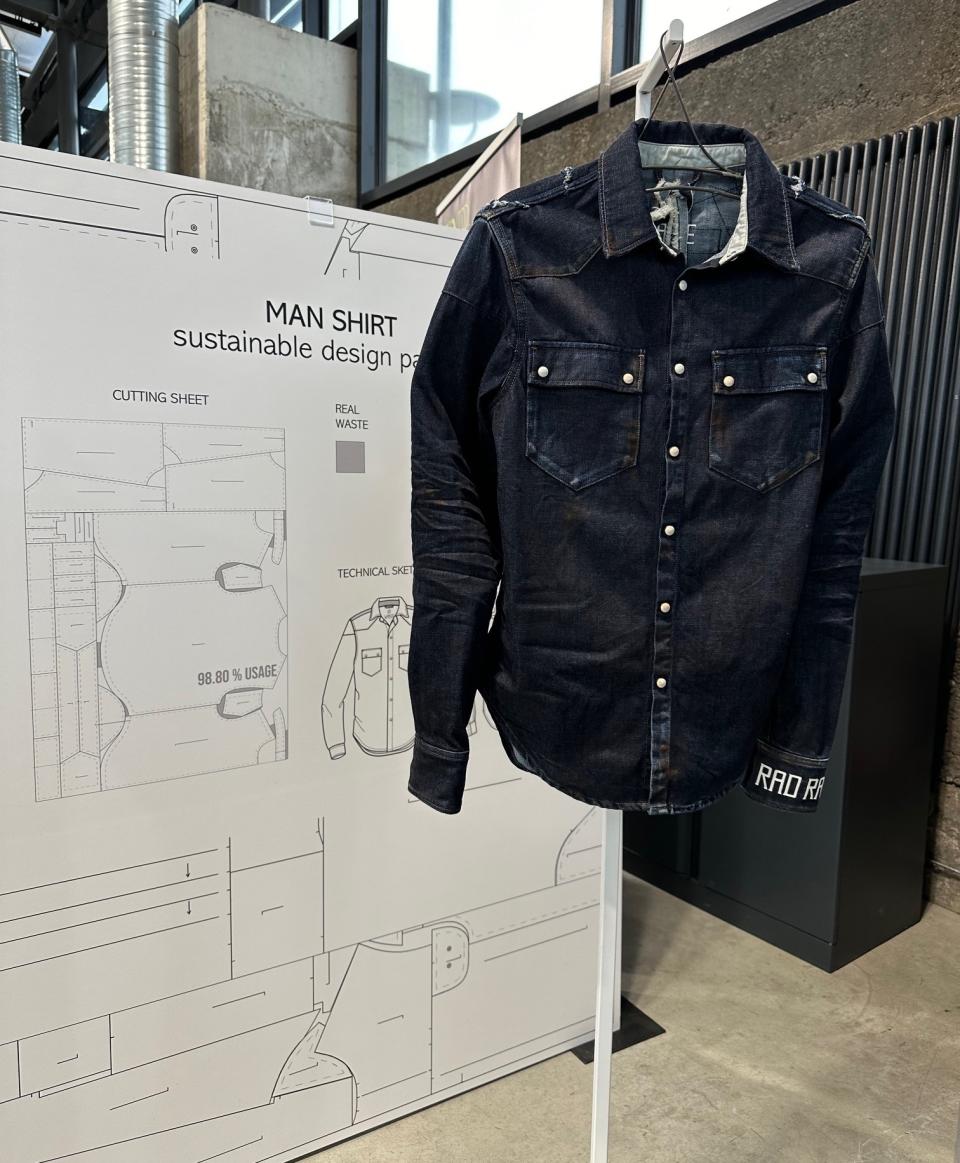
Creativity was in full force in Isko’s collection with PG Denim founder Paolo Gnutti. In its fourth season, the Isko Luxury by PG capsule showcases the mill’s Ctrl+Z fabrics in maximalist and luxurious ways like velvet-like flocking and stingray and reptile-inspired finishes. Gnutti pointed out that the specialty “exotic” denim fabrics can also be applied to accessories and footwear as an alternative to leather.
Flocking was applied to some of the fabrics used in Isko’s collaboration with “the godfather of denim” and Isko client Adriano Goldschmied. The collection spans black and indigo Venetian-inspired flocked fabrics, pleated trousers and tops with accordion pleating. The purpose of the collection was to merge Goldschmied’s design knowledge with recycled materials to show there are no limitations when designing with circular fabrics.

